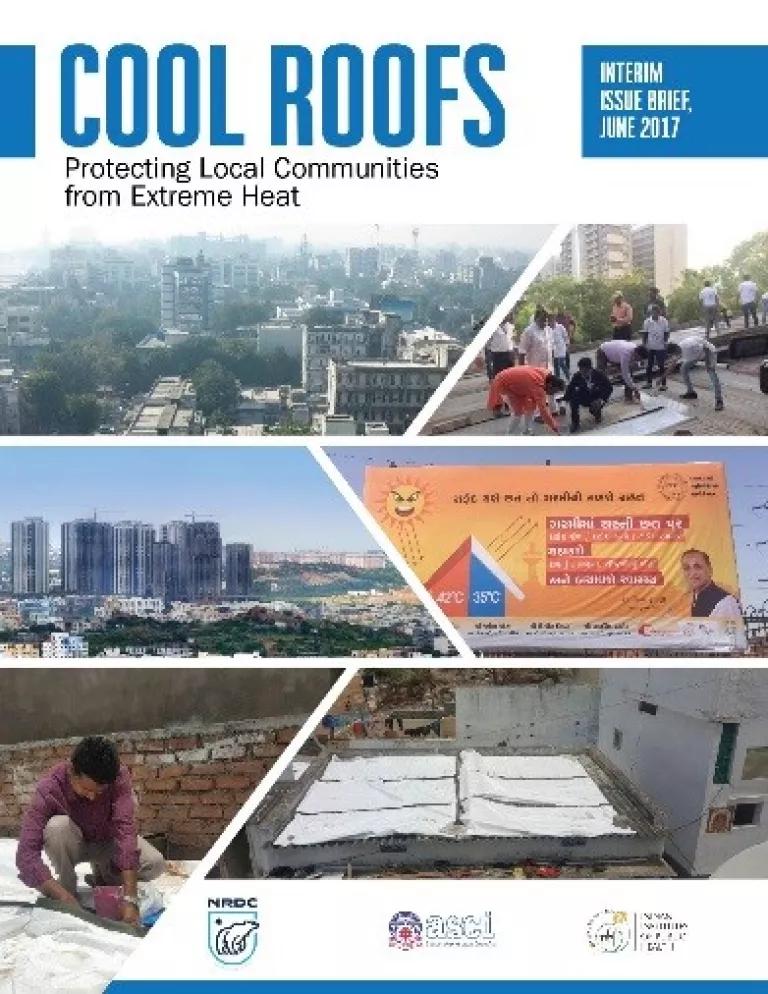
This is shaping up to be another very hot year in India, where climate-fueled temperatures are again taking a heavy toll. The good news is that efforts to protect and prepare Indians are heating up, too, across India.
Local communities, cities, states, the national government and partners like the Natural Resources Defense Council are expanding programs and initiatives to build resiliency in ways that could be a model elsewhere in South Asia, as you’ll see in the following summary.
In recent weeks, temperatures have spiked in the lead up to the monsoon across India. People, especially the most vulnerable—children, the elderly and the poor—have suffered in the scorching heat. Deaths have been widely reported this year. And over the past four years more than, over 4,600 people have died from extreme heat, per the Indian government. Climate change is driving temperatures higher and increasing the frequency and severity of heat waves.
Faced with those challenges, cities, states and the national government are taking concrete action to prepare and protect their local communities. For example, drawing on lessons from the ground-breaking Ahmedabad Heat Action Plan, 17 cities and 9 states have adopted, or are developing, heat action plans in India this year.
Also, at the national level, the Indian Meteorological Department has stepped up with expanded forecasts to over 300 cities, and issued an early heat “outlook” in February. The National Disaster Management Authority (NDMA) issued new national guidelines and television advertisements in local languages focused on protecting communities from extreme heat.
The 17 cities that have developed heat action plans are: Ahmedabad in Gujarat, Nagpur, Gondia, Chandrapur, Nanded, Akola, and Jalgaon in Maharashtra, as well as Bhubaneswar, Puri, Koraput, and Baleshwar in Odisha; along with new plans that have been launched or are under development in key cities in 2017, including Vijayawada/Amaravati in Andhra Pradesh, Rajkot and Surat in Gujarat, Hazaribagh in Jharkhand, Rahat in Uttar Pradesh and Hyderabad in Telangana. The nine Indian states that have adopted or are developing state-wide Heat Action Plans in 2017 are: Odisha, Telangana, Bihar, Maharashtra, Gujarat, Andhra Pradesh, Jharkhand, Karnataka and Haryana.
Next, this Friday (9th June), NRDC’s India team and partners are leading a workshop for journalists in Ahmedabad, and highlighting a new set of resources that demonstrate what communities and residents can do to protect themselves from the deadly heat.
First, we are releasing an updated issue brief summarizing the 17 city heat plans and 9 state plans. Second, we’re releasing an interim issue brief on the new cool roof pilots in Ahmedabad and Hyderabad to build resilient infrastructure focused on vulnerable groups. And, third, we’re releasing a new video that illustrates how the first heat action plan was developed in Ahmedabad in 2013, which may help guide other communities to undertake similar steps to safeguard their residents.
Expanding Heat Resilient Cities Across India
This updated issue brief highlights key strategies for developing and implementing heat action plans across India. It builds on the effective and easy to use “How to Manual” that support the expansion of heat action plans across India so that local leaders can develop plans based on regional needs. Here is a link to the issue brief.
Cool Roofs: Protecting Local Communities from Extreme Heat – Ahmedabad and Hyderabad

This interim issue brief describes the innovative cool roof pilot projects deployed by the cities of Ahmedabad and Hyderabad this year. Simple steps such as painting roofs with lime-based white wash, adding tarp-like coverings or white ceramic tiles—low cost, high-impact measures—can help bring roof surface temperatures down by as much as 30 degrees centigrade and reduce indoor temperatures by 3 to 7 degrees centigrade. The issue brief also highlights examples from other cities in India as well as cities around the world. Here is a link to the issue brief.
“Beat the Heat” – YouTube Video on the Ahmedabad Heat Action Plan
This new video focuses on the creation and results of the Ahmedabad Heat Action Plan and how it has expanded to other Indian cities. The video is supported by CDKN and led by NRDC and our key partner the Indian Institute of Public Health-Gandhinagar. Here is a link to the video.
The workshop for journalists in Ahmedabad on Friday will include a discussion of these new resources and cross-learnings among Indian cities, states and the central government agencies. Journalists attending will hear from leading experts on heat waves from Indian Meteorological Department, The National Disaster Management Authority, and city governments will attend the workshop. Partnering with NRDC to host the workshop are the Public Health Foundation of India, Indian Institutes of Public Health in Gandhinagar and the Administrative Staff College of India.
This advance in climate adaptation efforts demonstrates that India—especially through city and state action—is taking seriously its commitments to combat climate change. Through this progress, India is showing the world that, as we work together to fight climate change, we can take smart steps right now to shield millions of people from killer heat waves.
Connecting Extreme Heat and Its Impacts to Climate Change: A Media Seminar
Date: Friday, 9 June 2017 at 10:00 am
Location: IIPH Campus, Gandhinagar